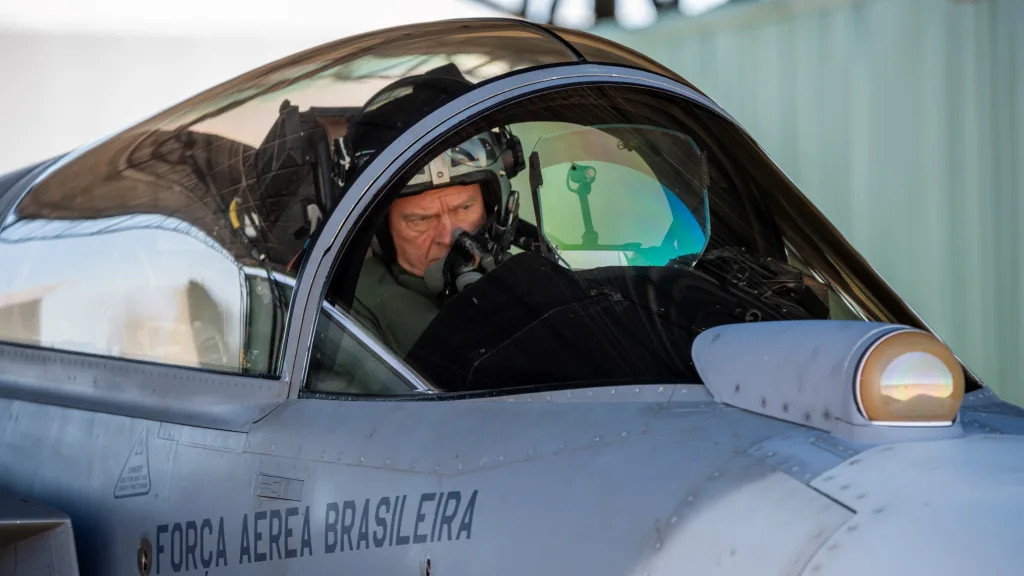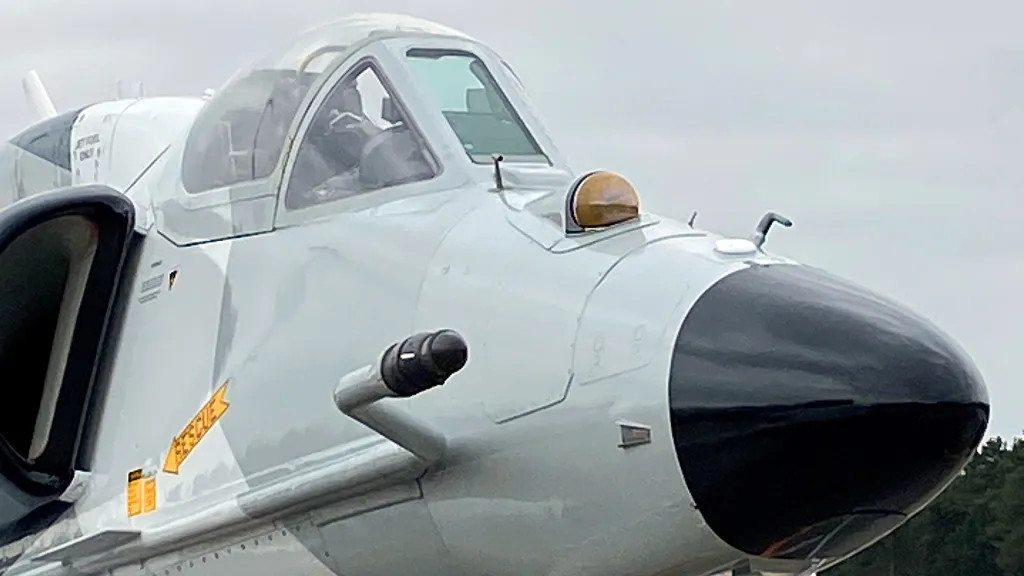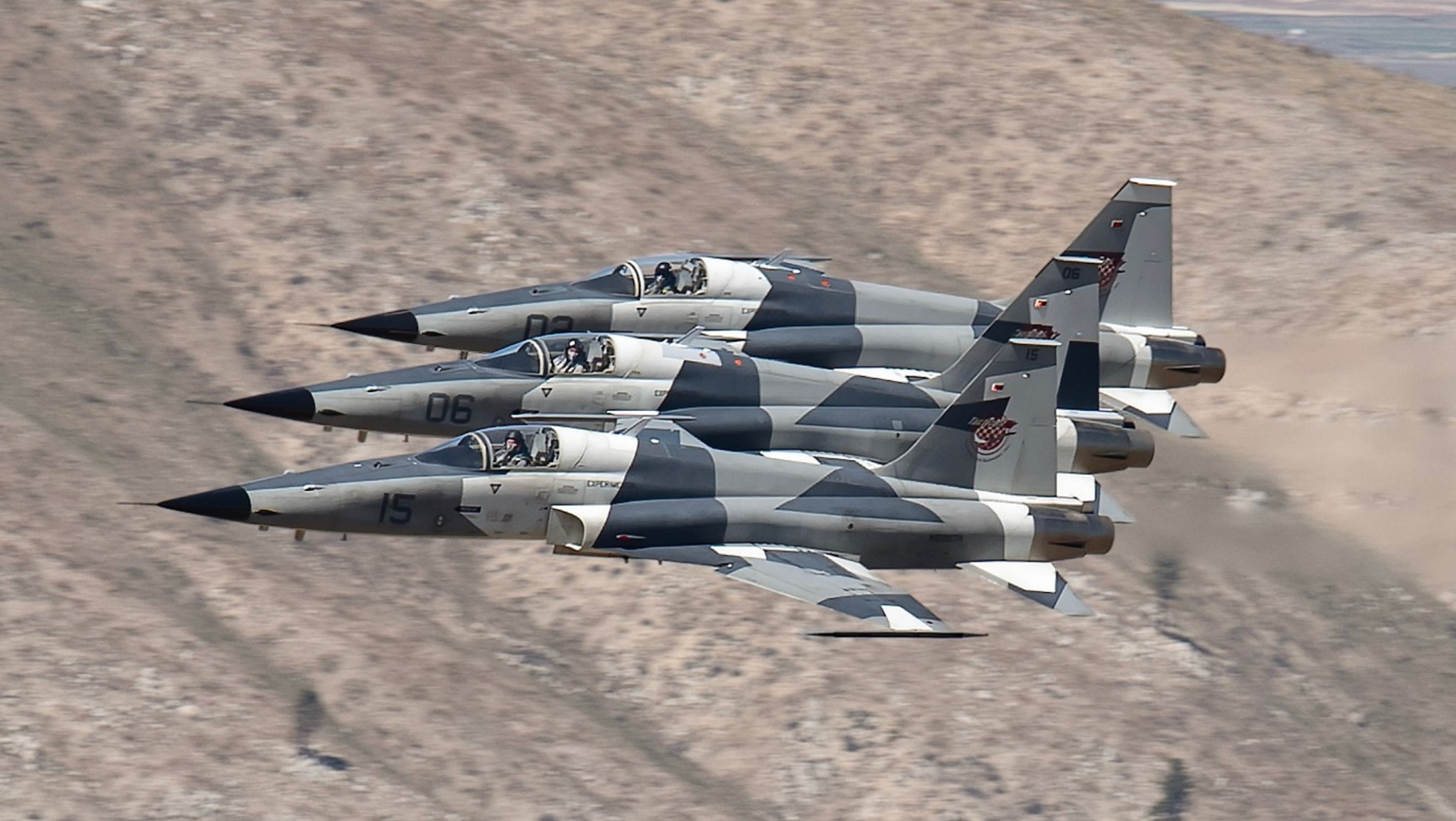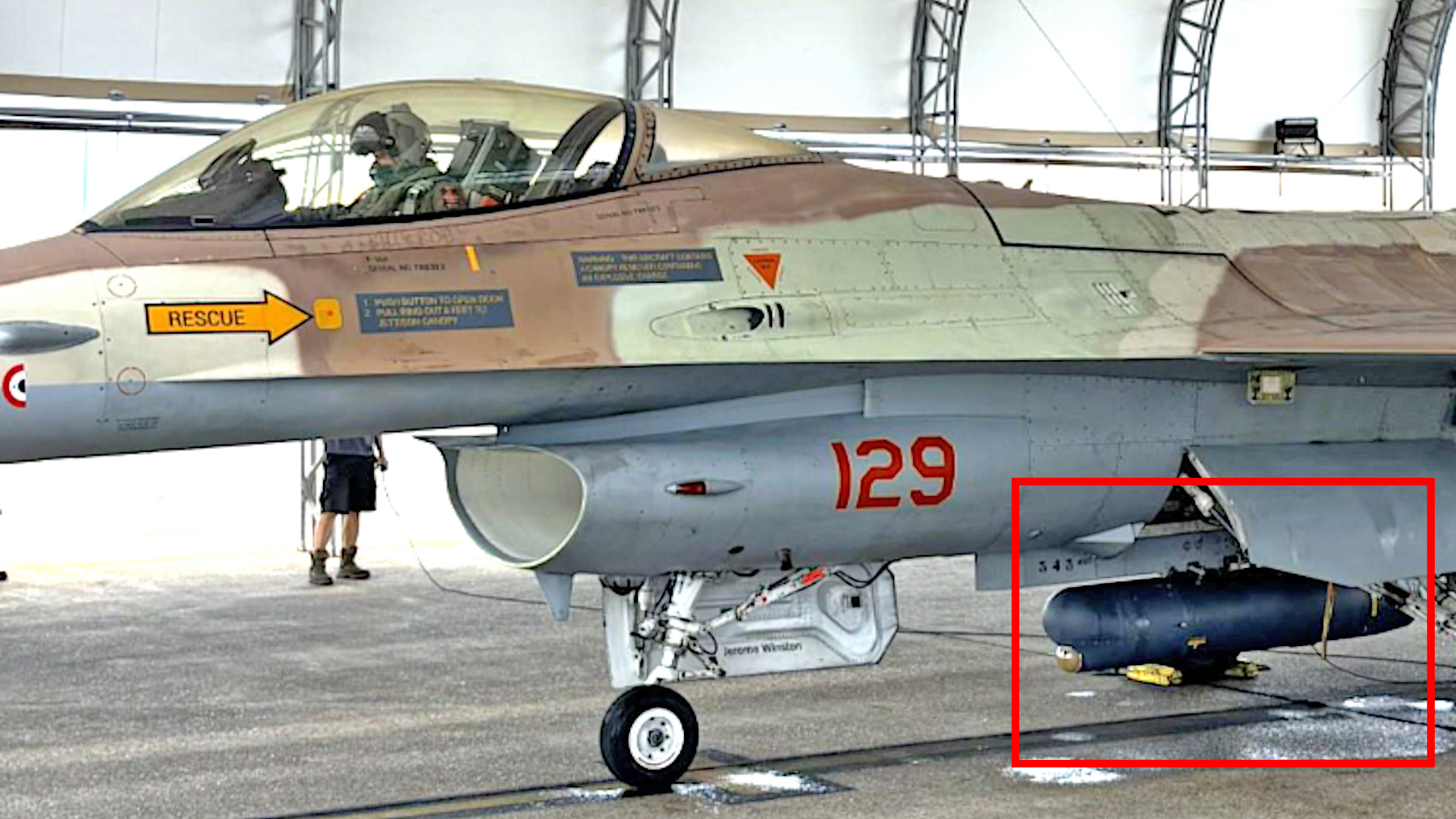Private adversary air company Top Aces’ F-16 Vipers, the only ones currently in the hands of a private operator, are now flying with podded infrared search and track (IRST) systems. This follows Top Aces’ adding an internally integrated IRST to some of its A-4 Skyhawk jets and reflects a broader trend among commercial providers of ‘red air’ aggressors amid growing demand for more advanced threat sensor replication for training and testing purposes.

The system that Top Aces has now integrated onto its F-16s consists of a Northrop Grumman OpenPod, a modular, open-architecture design, equipped with Leonardo’s SkyWard, a long-wave IRST sensor. Coherent Technical Services Inc. (CTSi) and Seger Aviation LLC were also involved in the integration process, according to a press release today from Top Aces.

Skyward was originally developed by Selex ES (a subsidiary of Finmeccanica that eventually merged fully into Leonardo) and a variant is also integrated internally on Saab’s Gripen E fighter. The War Zone previously noted that the IRST now found on some Top Aces A-4s also looks to be a version of this sensor.


“We’re delighted to add this advanced IRST capability to our ADAIR training portfolio,” Russ Quinn, Top Aces President and a retired U.S. Air Force officer with experience as an aggressor pilot, said in a statement. “Fitted with Top Aces’ open architecture ‘Advanced Aggressor Mission System’ (AAMS), our F-16 AAF [Advanced Aggressor Fighter] will continue to rapidly integrate a range of high-tech sensors to meet evolving customer requirements.”
Top Aces began receiving its F-16s, which are ex-Israeli Air Force F-16A/B Netz variants, in 2021 and subsequently upgraded them to the AAF configuration. The AAMS is the core of that upgrade package and includes an active electronically scanned array (AESA) radar, a Link-16-enabled datalink, and the ability for the pilot to use the Thales Visionix Gen III Scorpion helmet-mounted display system. You can read more about AAMS and the F-16 AAFs in greater detail in this past War Zone feature.

The War Zone has noted in the past that the AAMS has an open-architecture design specifically intended to allow for the relatively rapid integration of additional capabilities, including IRST systems. After the first of Top Aces’ IRST-equipped A-4s emerged in January, we also raised the question of whether a similar capability could be coming to the company’s F-16s.
IRSTs spot and track targets via their infrared emissions and are therefore not impacted by a target that may feature a reduce its radar cross-section (stealth). This also makes the sensors immune to radio frequency electronic warfare jamming. Since IRSTs operate passively by default, targets are not alerted to the fact they have been detected and are being tracked.
IRSTs can also be used to cue or otherwise be tied to other sensors, including the AESA radars found on Top Aces F-16s, creating a fusion of data that can provide higher fidelity tracks of multiple targets, as well as just better overall situational awareness. The IRST-equipped OpenPod “allows the Top Aces pilot to select and slave one advanced sensor to another, optimizing their ability to challenge 5th Generation tactics across various phases of air-to-air combat training engagements,” the company’s press release notes.

IRST systems have long been and continue to be in use on aircraft in service with a number of potential U.S. adversaries, including near-peer competitors China and Russia. As such, the need to be better able to replicate those threats to challenge stealthy fifth-generation fighters, like the F-22 Raptor and F-35 Joint Strike Fighter is a key reason why IRSTs are increasingly appearing on ‘red air’ aggressor jets, and not just ones belonging to Top Aces. The desire for more advanced sensor replication in training exercises, as well as for test and evaluation activities, in general, has also been driving demand in recent years to add more modern AESA radars to adversary air jets.

“For pilots of fifth-generation fighter jets, the combination of Top Aces’ highly maneuverable F-16As and their new active electronically scanned array [AESA] radar is exactly what the USAF needs,” Todd “T-Bone” Robbins, Top Aces’ site lead for the company at the U.S. Air Force’s at Eglin Air Force Base in Florida, told The War Zone last year.
“I flew a dissimilar basic fighter maneuvers [BFM] mission [in an F-16 AAF] a few weeks ago against an experienced F-22 Raptor pilot,” Robbins also said at the time. “After the mission, he told me it was the highlight of his year! We will take that feedback any day.”
U.S. military demand for advanced aggressor capabilities and overall capacity is only likely to keep growing as America’s armed forces continue to shift their primary focus to preparing for future high-end first, especially a possible one against China in the Pacific. This has led to increasingly large aerial combat exercises conducted over ever-broader areas, which in turn has created additional requirements for adversary air support, whether it be provided organically or by contractors like Top Aces.
There has been a resurgence of interest in IRSTs in the U.S. military and elsewhere in the West in recent years as the prospect of squaring off against stealthy targets, including crewed and uncrewed aircraft, as well as missiles, has grown. The U.S. Air Force notably evaluated an IRST-equipped OpenPod as an option for its F-15C/D Eagles, but ultimately decided to acquire Lockheed Martin Legion Pods fitted with a sensor system of this kind instead. The U.S. Navy has also been working on fielding an IRST system for its F/A-18E/F Super Hornets integrated into a modified drop tank. Legion Pods and other IRST systems have also been used extensively on other crewed and uncrewed aircraft in support of various U.S. military tests.

Overall, Top Aces’ F-16s getting IRST-equipped OpenPods points to this sensor capability not just being valuable for better replicating advanced threats, but also increasingly a standard requirement for contractor-operated aggressor jets.
Contact the author: joe@twz.com
